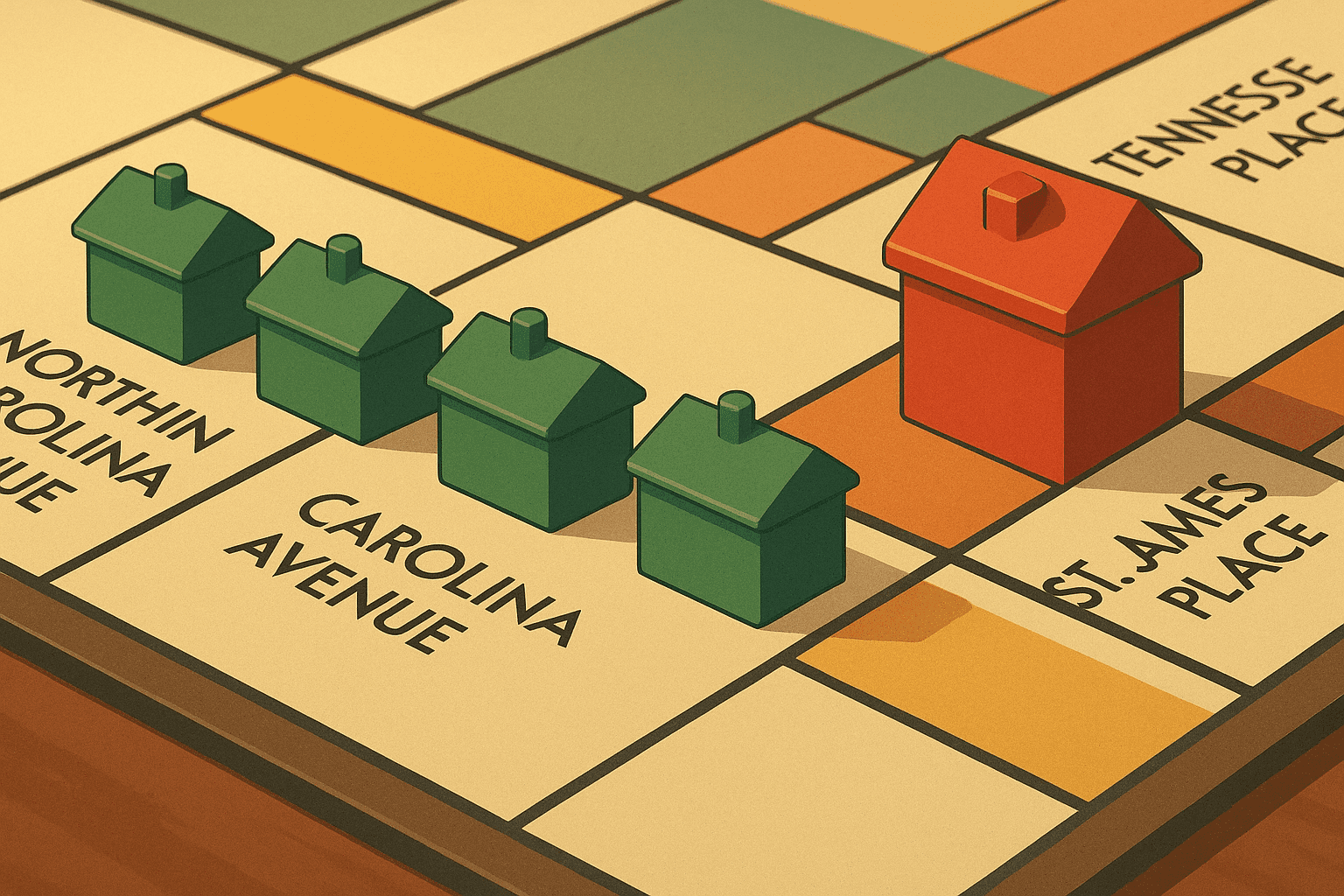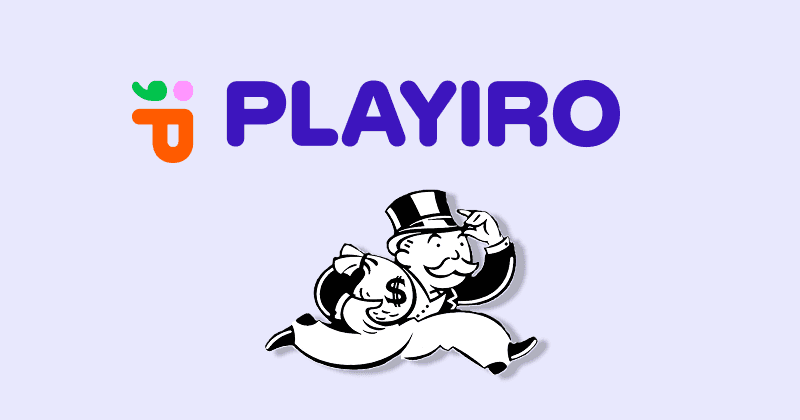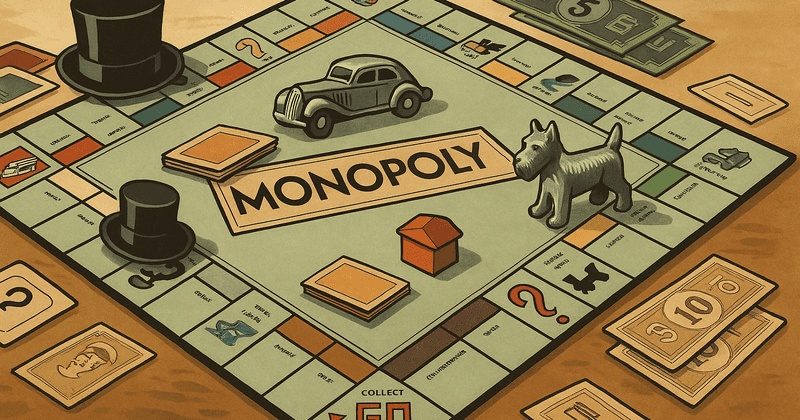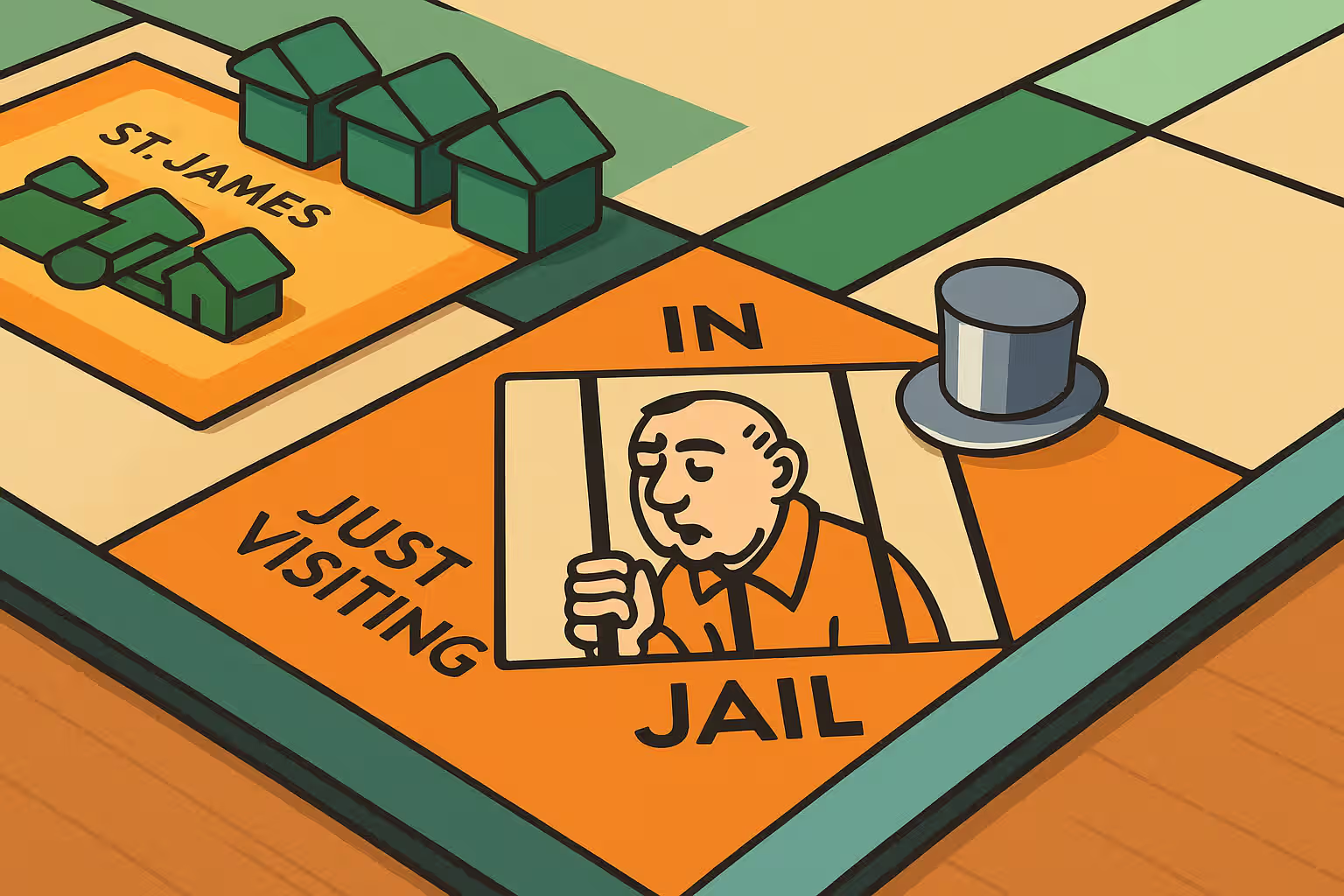
When to Build Houses vs Hotels in Monopoly – The Ultimate Strategy Guide
In Monopoly, deciding when to build houses and when to upgrade to hotels can make the difference between winning and losing. The right timing impacts your rent potential, cash flow, and overall control of the board. While houses are often the most efficient early-game investment, hotels can deliver massive late-game payoffs — but they come with higher risks.
This guide breaks down the rules, costs, strategies, and best practices for upgrading properties in Monopoly, complete with examples and tables to help you make smarter decisions. If you’re new to the game, check out our Monopoly game rules first to understand the basics.
Created By Adam Davis Fernsby
How Houses and Hotels Work in Monopoly
Before upgrading strategically, you need to understand the basics:
- To build a hotel, you must first build four houses on a property
- When you add a hotel, it replaces the four houses
- Hotels dramatically increase rent but require higher upfront costs
- There’s a limited supply: only 32 houses and 12 hotels exist in the game
Because supply is limited, house shortages often become part of advanced Monopoly strategies.
Understanding the Costs and Returns
Let’s look at an example using the Orange properties (St. James Place, Tennessee Avenue, New York Avenue), one of the most profitable color sets in Monopoly:
| Upgrade Level | Investment per Property | Example Rent | ROI Potential |
|---|---|---|---|
| 0 Houses | Property cost only | $14 | Low |
| 1 House | +$100 | $70 | Medium |
| 2 Houses | +$200 | $200 | High |
| 3 Houses | +$300 | $550 | Very High |
| 4 Houses | +$400 | $700 | Very High |
| Hotel | +$500 | $950 | Highest, but riskier |
Key Insight: On high-traffic color sets like Oranges, three houses per property usually give the best rent-to-cost ratio.
When to Build Houses First
Houses are the foundation of a winning strategy in Monopoly, especially early in the game.
Best situations to build houses:
- When players are still buying properties and cycling around the board frequently
- If you own a high-landing color set (Oranges, Reds, Light Blues)
- When opponents are about to pass Go and likely to land in your rent zone
Pro Tip: Spread your investment. Build three houses on each property in your set before maxing out a single property — this covers more landing spots and increases total earnings.
When to Upgrade to Hotels
Hotels are best used in the mid-to-late game, when cash flow becomes critical and opponents are frequently circling into your zones.
Best situations to build hotels:
- You own high-value, high-traffic color sets like Oranges, Reds, or Yellows
- Opponents are cash-strapped and forced to pay high rents
- You want to free up houses for other properties, since hotels return four houses to the bank
- You're aiming to force bankruptcies quickly by creating rent spikes
Example: If you control the Orange set near Jail, upgrading to hotels when players are repeatedly passing through the area can be devastating for opponents.
House Shortage Strategy
Since there are only 32 houses available, controlling them can be a powerful tactic:
- Build three houses on multiple properties instead of rushing to hotels
- Holding houses limits opponents’ ability to upgrade, slowing their progress
- Once your position is secure, convert to hotels later to free up houses and push your advantage further
This strategy is especially strong when multiple players are competing for upgrades.
Factors to Consider Before Building
Before investing in houses or hotels, evaluate:
- Cash reserves: Always keep enough to survive paying opponents’ rents
- Board position: Upgrade just before players are likely to enter your properties
- Probability: Focus on high-landing sets (Oranges, Reds, Light Blues) for the best returns
- Opponent risk: Avoid over-investing if other players are about to upgrade their own properties
Houses vs Hotels – Quick Comparison
| Aspect | Houses | Hotels |
|---|---|---|
| Cost per Upgrade | Lower | Higher |
| Rent Increase | Strong | Massive |
| Best Timing | Early–mid game | Mid–late game |
| Investment Risk | Low | Higher |
| Cash Reserve Needed | Less | More |
| Strategy | Spread upgrades across properties | Maximize income on key sets |
Best Color Groups for Houses and Hotels
Not all color groups are created equal — some are better for early houses, others for late-game hotels:
| Color Set | Strategy | Why It Works |
|---|---|---|
| Orange | Build houses early, upgrade to hotels mid-game | Highest landing probability after Jail |
| Red | Three houses first, hotels later | Great ROI and strong traffic |
| Light Blue | Early houses for cheap development | Low cost + frequent landings |
| Yellow | Houses first, hotels if cash allows | High rent potential but more expensive |
| Dark Blue | Skip hotels until late game | Expensive properties with lower traffic early |
Example Scenario: Smart vs Risky Upgrades
Player A:
- Owns the Orange set
- Builds three houses per property first
- Waits until opponents are cash-limited, then upgrades to hotels
Player B:
- Rushes to build hotels early
- Runs out of cash and is forced to mortgage properties
Result: Player A dominates with sustainable rent income, while Player B risks bankruptcy — proving timing is everything.
Conclusion
In Monopoly, timing your upgrades is one of the most important parts of winning strategy.
- Three houses per property often deliver the best returns early.
- Hotels become powerful in the late game when opponents are desperate and cash is tight.
- Always balance rent potential with cash flow, watch for house shortages, and upgrade strategically based on board traffic.
By mastering when to build houses and when to invest in hotels, you’ll maximize income, control the board, and put yourself in the strongest position to win.


